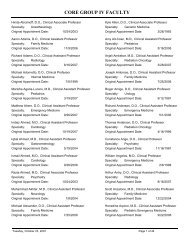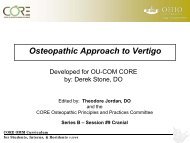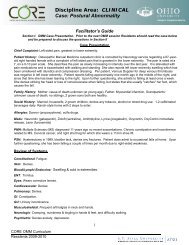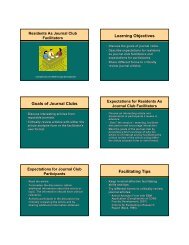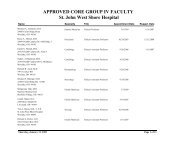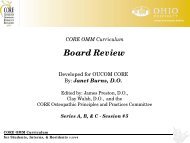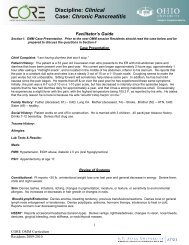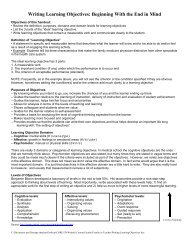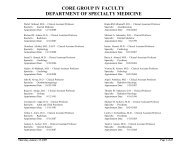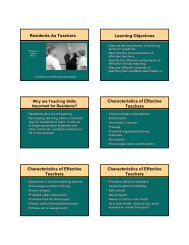Occipital Neuralgia
Occipital Neuralgia
Occipital Neuralgia
Create successful ePaper yourself
Turn your PDF publications into a flip-book with our unique Google optimized e-Paper software.
Discipline Area: ClinicalCase: <strong>Occipital</strong> <strong>Neuralgia</strong>3. How do you explain the currentstructural findings in the context ofthis case?Are any relevant structuralfindings missing?What would you do differently?Why?Somato-somatic reflexes, manifesting as myofascial changes andsomatic dysfunctions.Missing findings include muscle tightness in the trapezius anddeep musculature of the cervical/suboccipital region, andevaluation of the CRI, TMJ, and neck fascia.These areas need to be addressed4. What pathophysiology & functionalanatomy knowledge is pertinent fordiagnosing/treating this patientPathophysiology and Functional Anatomy The greater occipital nerve is the largest purely afferent nerve inthe body, innervating the posterior skull from the suboccipital areato the vertex. It is formed from the posterior division of the second cervical nerve. Within the substantia gelatinosa of the spinal cord, the afferentfibers from this nerve lie in close approximation to the nucleus andspinal tract of the trigeminal nerve. Rather than exiting through a discrete spinal foramen, the nerveleaves the bony spinal column between the arch of the atlas andaxis. It travels inferolaterally toward the area of the C2–C3zygapophyseal (facet) joint and then curves around the inferioroblique capitis muscle to ascend toward the occiput deep to thesemispinalis capitis muscle. It pierces either through the tendinous insertion of the trapeziusmuscle or between the trapezius and semispinalis muscles toreach the subcutaneous tissue of the occipital area. The site of perforation through these muscles is located just medialto the occipital artery.____________________________________________________________ The lesser occipital nerve forms from the anterior divisions of thesecond and third cervical nerves.It ascends along the posterior margin of the sternocleidomastoidmuscle, where it provides sensory fibers to the area of the scalplateral to the greater occipital nerve.5. What will be your highest yieldregions?6. How does previous trauma influencethese regions?Head, cervical, thoracic. and ribcage regionsThere is no recorded trauma history. However, trauma has to beconsidered as an inciting event.CORE OMM CurriculumResidents 2009-20104




